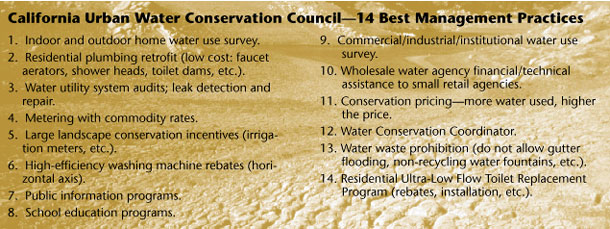|
|
| Return to Table of Contents |
they may qualify for or how to access the programs. We also heard that the delivery time for assistance in many cases is unsatisfactory, partly because there is little coordination of programs. The Western Drought Coordination Council strongly suggested establishing a federal drought coordinating body. The law that created this Commission indicated a need to develop an effective coordinated federal approach to drought mitigation and response. The law required us to determine if all federal drought programs should be consolidated under one entity. In arriving at our recommendations, we considered the consolidation option and concluded it would be impractical and ineffective. Drought affects a wide array of constituents—among them farmers, ranchers, non-farm businesses, tribes, water districts, municipalities, and industry—as well as the environment. The federal expertise required to address the needs of these constituents and the impacts of drought on the environment resides in many agencies. The federal agencies currently involved in drought programs report to multiple congressional authorizing and appropriating committees, making it difficult to restructure these authorities in a timely manner. We also considered three other options. The first was a National Drought Council similar in composition to the National Drought Policy Commission, but that also includes a representative from the U.S. Department of Energy, a representative from the Environmental Protection Agency, and a nonfederal, nongovernment environmental representative. The second option was a presidentially created federal drought coordination body comprised of only federal representatives from the appropriate federal agencies. This entity would be directed to coordinate with state and local governments, tribes, regional drought-related entities, and the private sector in carrying out its duties. The third option was to build on existing, less formal models such as the Resource Conservation and Development Councils or the Association of State Dam Safety Officials. In the end, we agreed that coordination would be more effective if nonfederal participation were explicitly established (see Recommendation 5.1). Need for Public Education We heard often during our deliberations that a key element in successful drought preparedness is public education. Many people are made aware of the need for water conservation and other measures during drought. But once drought is over, old habits tend to dominate. Most examples of
successful public education campaigns presented during our
hearings |
 |
|
|
